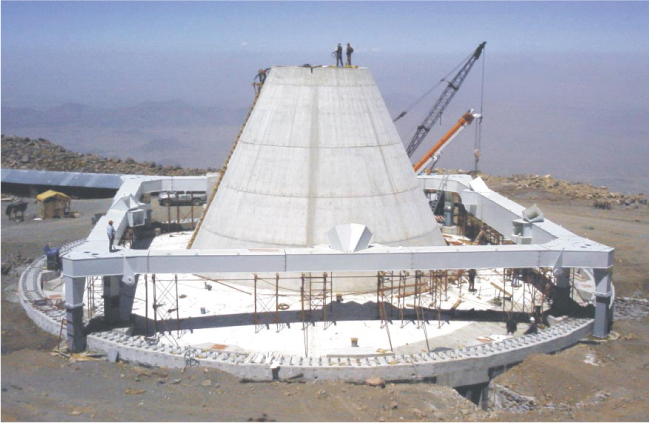US–Mexico Radio Telescope
DOI: 10.1063/1.1485576
The Large Millimeter Telescope being built 270 kilometers southeast of Mexico City on Sierra Negra is behind schedule and over budget, yet the scientists involved are upbeat.
A collaboration between Mexico’s National Institute of Astrophysics, Optics, and Electronics and the University of Massachusetts at Amherst, the 50-meter LMT was supposed to come online this year (see Physics Today, April 1997, page 56
Radio astronomers plan to use the LMT to detect and study galaxies in all stages of evolution, measuring spectral lines from gases and radiation emitted from dust. As you look farther and farther out, says Schloerb, the dust emissions get redshifted into the LMT’s bandwidth, from 850 micrometers to 4 millimeters. “The cool statistic,” he adds, “is, if you take present estimates, we will be able to point anywhere and integrate for one second and discover a new object. We have a killer application.”

LUIS MEDINA/UMASS

More about the Authors
Toni Feder. tfeder@aip.org
